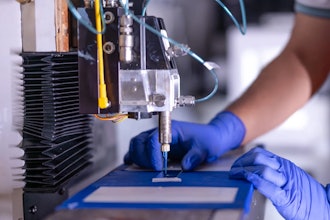A team of researchers from the University of Cape Town in South Africa has created the world's first bricks made out of human urine. The team calls them bio-bricks, and yes, they do look like giant clumps of cat litter.
The bricks are created using microbial carbonate precipitation, a process similar to the way that seashells are formed.
The bricks could be a waste recovery solution that is also more efficient. Traditional bricks have to be baked in a kiln at about 1,400°C; the bio-bricks are created in room temperature molds.
So, how does it work? According to the researchers, it begins with urease-producing bacteria that is added to sand. The urease breaks down the urea in urine while producing calcium carbonate through a chemical reaction. The carbonate cements the sand into the shape of the mold. What is interesting is that the strength of the brick is dependent upon how long you let the bacteria work.
Previous work has sourced synthetic materials, but this was the first to tap humans. According to the researchers, urine is "liquid gold" because the process could also be a boon for the commercial fertilizer industry. Nitrogen, phosphorus and potassium are byproducts of the bio-brick manufacturing process. Up to 97% of the phosphorus in urine can be converted into calcium phosphate, which is important, because the world’s natural phosphate reserves are reportedly running dry.
Next, the researchers will continue to test the bio-bricks' strength, but they will also look to tap the other half of the natural resource. Right now, they're only using male urine that is collected using special urinals.
Make sure to keep an eye on the researchers' work. Surely urine for a real treat.






















